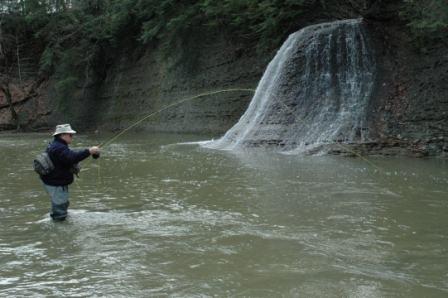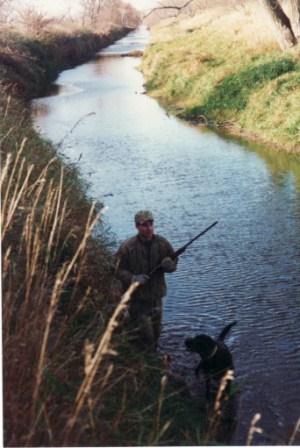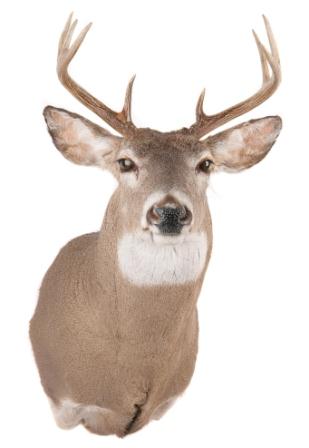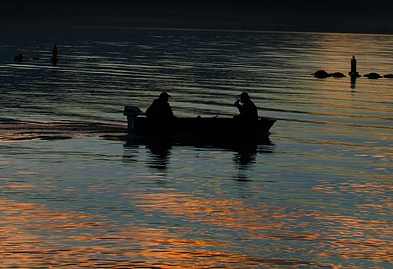Great Lakes Steelhead Fishing – Part 1
by Mike Bleech
There are the seasons as defined on a calendar, then there are seasons in the minds of steelhead anglers. December is the transitional month between fall and winter both on the calendar and along most Great Lakes tributaries. The actual date of the transition, though, does not necessarily fall on the first day of winter. It depends upon weather patterns, upon rain, snow and temperatures
What is great about December is that steelhead have not yet become lethargic. They are full of fight and still prone to aerial acrobatics, not always by the end of the month but almost certainly well into the month. Also, hunting has drawn the more casual steelhead anglers away from the creeks. You might get a pool to yourself on creeks where earlier anglers were crowded elbow to elbow, which is not a fitting situation for any serious steelhead angler. Steelhead fishing is one of life’s great pleasures, something to be done with a degree of reverence. The carnival atmosphere during the balmy days of early summer is exciting, but the relative calm and possible solitude of December allows deeper thought, greater appreciation.
Perhaps my best day of steelhead fishing, although I could recall several other ‘best’ days of steelhead fishing, happened last December on a medium-size Great Lakes tributary. It was midweek and I went alone to a favorite pool, a long pool where steelhead have plenty of room to fight. Weather was not out of the ordinary, threatening to rain which would have made it much less comfortable in 40-degree temperatures. But it never went further than a drizzle.
I started by swinging and slowly stripping a silver and white streamer which produced one missed hit, but nothing else. I switched to my stand-by, a soft egg pattern which I tie simply by adding a very small bit of peach color yarn to the soft plastic egg to simulate skein. Fish were surfacing in front of me, but nothing took my egg so I moved upstream into deeper water. The move paid off.
After releasing two or three steelhead and losing several others at various stages of the battles, my most exciting battle with a steelhead, the largest steelhead I have ever hooked on fly-fishing gear, began. It was on that ‘one more cast’ because light was fading.
During a fight with a big steelhead time becomes irrelevant. I do not know how long this one lasted. The fish made only one long, low jump in the midst of its first run. Had it jumped more, certainly the fight would not have lasted so long. What that jump did accomplish however was reveal the steelhead’s size which made every moment of the struggle more stimulating.
I thought the fight was nearing the end when I started to work the fish toward me. Just as I caught a glimpse of it the water exploded as the huge fish swung its broad tail. The fight was nowhere near its conclusion.
During one of its line-sizzling runs my reel, an English-made Hardy reel, which was a gift several years earlier, just died. I think it got so hot that the spool warped. From that point I had to manage the fish by stripping line. And it seemed like I was going to win when the hook came out on a tight line. The battle had lasted too long.
My immediate reaction was to slump my shoulders in grief. That lasted only briefly. Visions of the magnificent steelhead were making it a great memory less than a minute after the encounter ended. An image of a long, silver fish with a wide iridescent stripe of pink and purple was already burned deep into my mind. It had given me everything I could ever hope for a steelhead to give. Had I worked it into shallow water there was no one around to take a photo. I had no tripod to set up a timed photo, and I would not have taken the chance of killing the fish to do it anyway.
One advantage of ‘the one that got away’ is that it can be any size you wish. But in this case my trophy is the dead Hardy reel which is now on a shelf in my rod room along with numerous other mementos from my countless adventures afield.
Next post: The Incredible Artificial Egg
Click here to see a great steelhead fillet knife – the Havalon Baracuta.
4,069 total views, no views today








